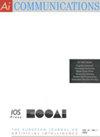解释基于变压器的图像字幕模型:一个实证分析
IF 1.4
4区 计算机科学
Q4 COMPUTER SCIENCE, ARTIFICIAL INTELLIGENCE
引用次数: 12
摘要
图像字幕是将输入图像翻译成文本描述的任务。因此,它以一种生成式的方式将视觉和语言连接起来,应用范围从多模态搜索引擎到帮助视障人士。尽管近年来这些模型的准确性有所提高,但这也带来了越来越多的复杂性和可解释性和可视化方面的挑战。在这项工作中,我们专注于基于变压器的图像字幕模型,并提供定性和定量工具来提高可解释性,并评估此类模型的基础和时间对齐能力。首先,在生成的每一步,我们使用归因方法来可视化模型在输入图像中关注的内容。此外,我们提出了评估模型预测和归因分数之间的时间一致性的指标,这允许测量模型的基础能力和发现幻觉缺陷。在三种不同的基于transformer的架构上进行了实验,分别采用了传统的和基于Vision transformer的视觉特征。本文章由计算机程序翻译,如有差异,请以英文原文为准。
Explaining transformer-based image captioning models: An empirical analysis
Image Captioning is the task of translating an input image into a textual description. As such, it connects Vision and Language in a generative fashion, with applications that range from multi-modal search engines to help visually impaired people. Although recent years have witnessed an increase in accuracy in such models, this has also brought increasing complexity and challenges in interpretability and visualization. In this work, we focus on Transformer-based image captioning models and provide qualitative and quantitative tools to increase interpretability and assess the grounding and temporal alignment capabilities of such models. Firstly, we employ attribution methods to visualize what the model concentrates on in the input image, at each step of the generation. Further, we propose metrics to evaluate the temporal alignment between model predictions and attribution scores, which allows measuring the grounding capabilities of the model and spot hallucination flaws. Experiments are conducted on three different Transformer-based architectures, employing both traditional and Vision Transformer-based visual features.
求助全文
通过发布文献求助,成功后即可免费获取论文全文。
去求助
来源期刊

AI Communications
工程技术-计算机:人工智能
CiteScore
2.30
自引率
12.50%
发文量
34
审稿时长
4.5 months
期刊介绍:
AI Communications is a journal on artificial intelligence (AI) which has a close relationship to EurAI (European Association for Artificial Intelligence, formerly ECCAI). It covers the whole AI community: Scientific institutions as well as commercial and industrial companies.
AI Communications aims to enhance contacts and information exchange between AI researchers and developers, and to provide supranational information to those concerned with AI and advanced information processing. AI Communications publishes refereed articles concerning scientific and technical AI procedures, provided they are of sufficient interest to a large readership of both scientific and practical background. In addition it contains high-level background material, both at the technical level as well as the level of opinions, policies and news.
 求助内容:
求助内容: 应助结果提醒方式:
应助结果提醒方式:


